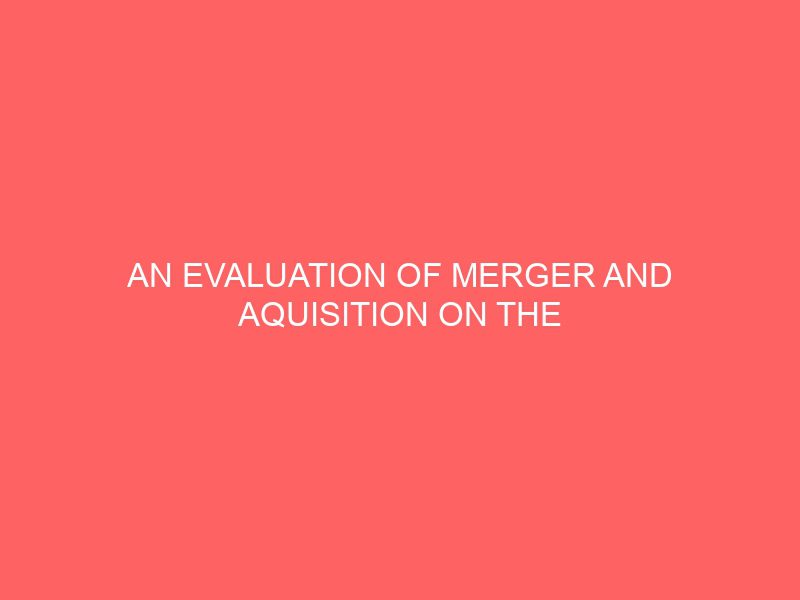Description
CAPTER ONE1.0
BACKGROUND TO THE STUDY
A business combination may take the form of either a merger oran acquisition. A merger is defined as the situation where two or morecompanies combine together to form a larger business organisation.On the order hand, an acquisition involves the purchase of controllingshare in another company. Klime Poposki defined acquisition as acombination of two or more companies in which the resulting firmmaintains the identity of the acquiring company. A merger is definedin section 590 of CAMA, 1990 as “any amalgamation of theundertaking or any part of the undertaking of one or more bodies”.Akanikor, in his paper “mergers and acquisitions” defined acquisitionas including “all business and corporate organizational and operational devices and arrangement by which the ownership andmanagement of an independently operated properties and business arebrought under the control of a single management”.Mergers and Acquisitions have been the form of attention in thedecades of the 1980 when such business activity was most prevalent.In today’s business world, the approach of business organizationconsidering mergers and acquisitions will be more strategic andreasons procedure with special consideration of the ethicalconsequences on many parties that will be affected.Corporations may seek external growth through mergers andacquisitions in order to achieve risk reduction, improve access to thefinancial markets through increased size, or obtain tax carry-forwardbenefits.
INSURANCE COMPANY
A mergers and Acquisitions may also expand the marketingand management capabilities of the firm and allow for new-productdevelopment. The motives for mergers and acquisitions are bothfinancial and non-financial in nature. Mergers and Acquisitionsactivities allow the acquiring firm to enjoy a potentially desirableportfolio effect by achieving risk reduction while maintaining the firms’ rate of reform. Risk-averse investors may then discount thefuture performance of the resulting firms at a lower rate and thusassign a high valuation than what was assigned to the separate firms.The second financial motive is the improved financing posture that amergers and acquisitions can create as a result of expansion in size.Larger firms may enjoy access to financial markets and thus be in abetter position to raise debt and equity capital. Greater financingcapability may also be inherent in Mergers and Acquisitions itself.This is likely to be the case if the acquired firm has a strong cashposition or low-debt equity ratio can be used to expand borrowing bythe merging or acquiring company. The final financial motive is thetax loss-carry forward that might be available in a merger andacquisition exercise if one of the firms have previously sustained atax-loss.The Non-financial motives for mergers and acquisitions includethe desire to expand management and marketing capabilities as wellas the acquisition and development of new products.







